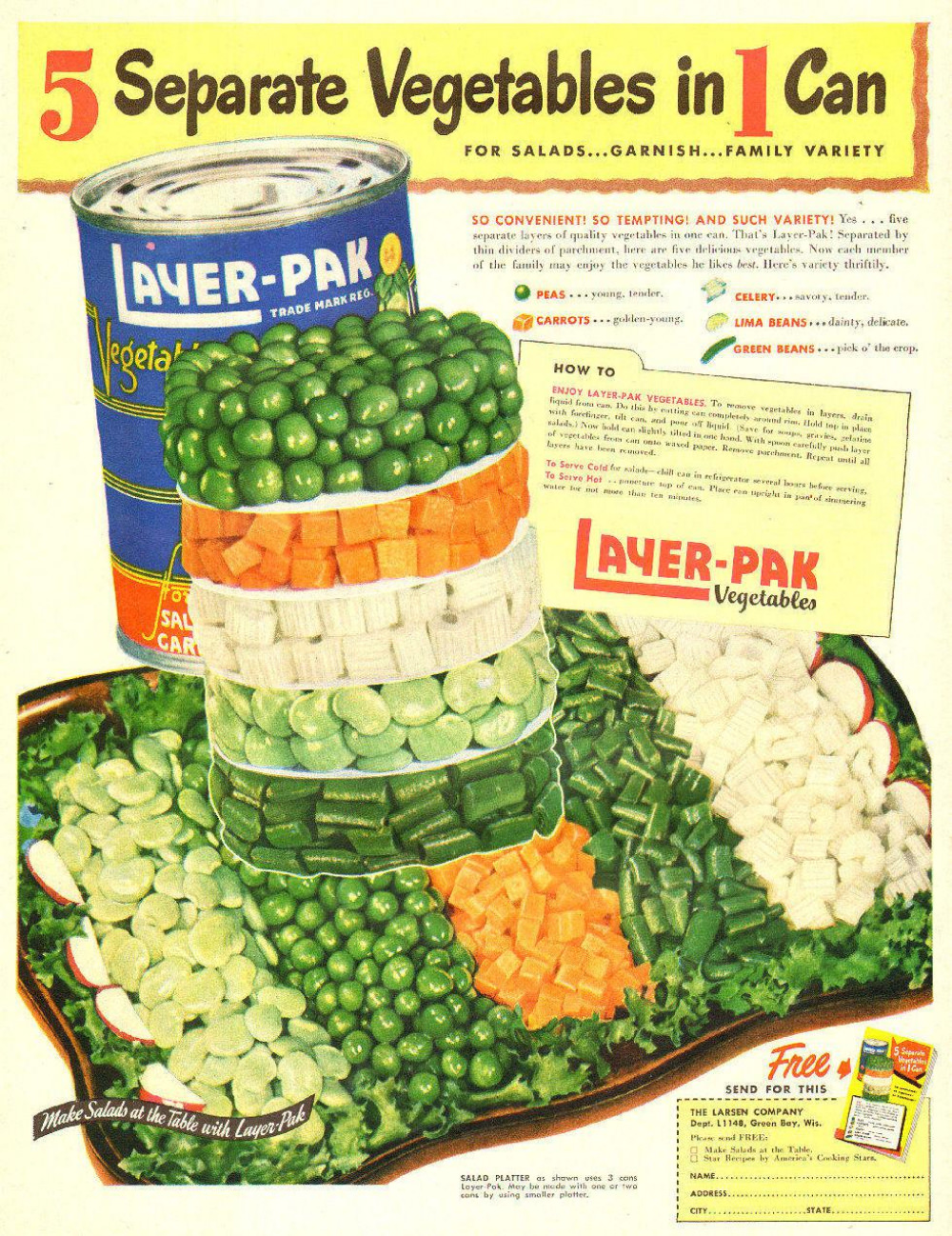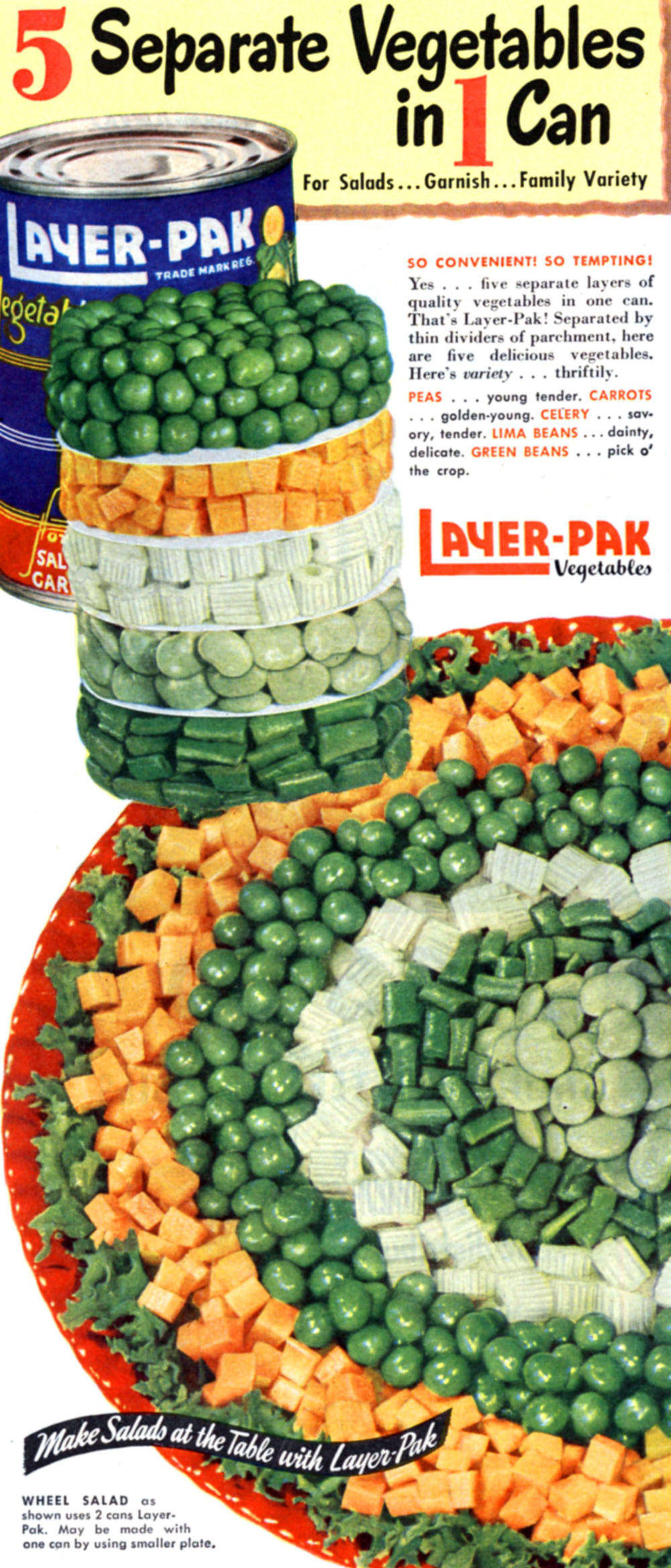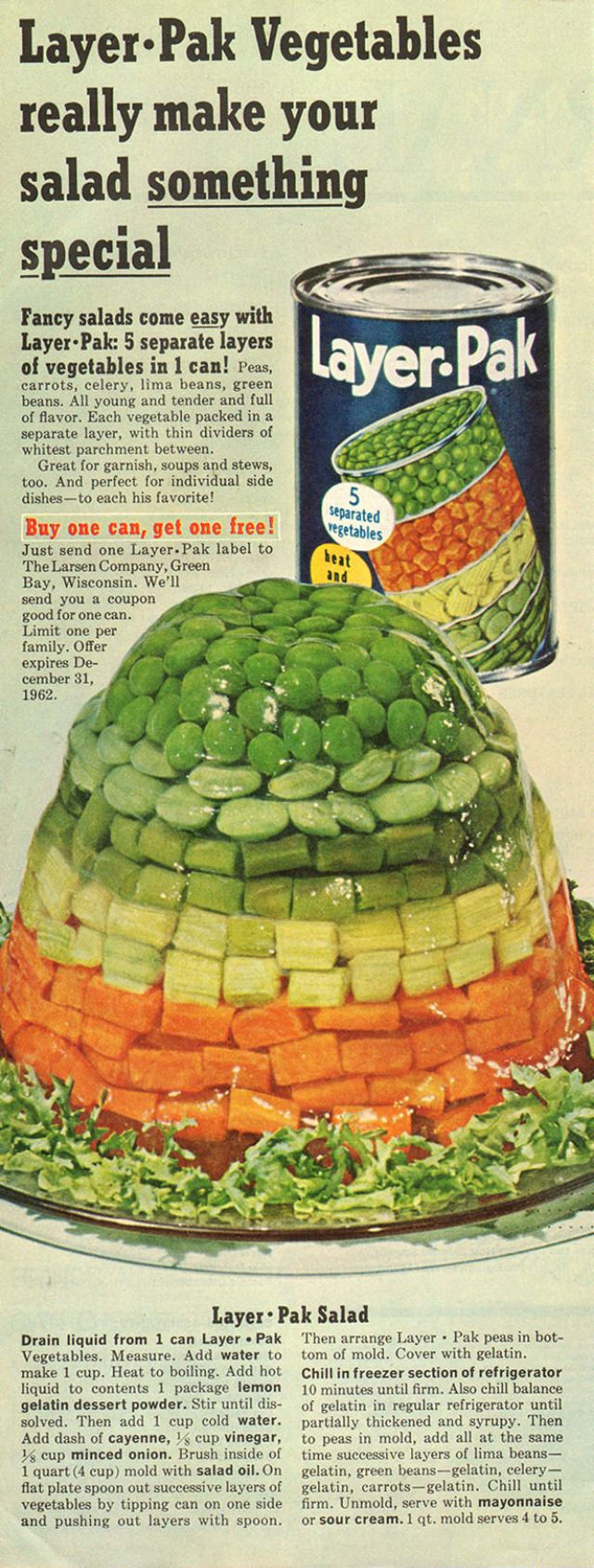Canned vegetables, a staple in many American kitchens, underwent a unique transformation in the late 1940s. As convenience and personal preferences started to play a significant role in food choices, the Larsen Company seized the opportunity to introduce a fresh concept: the “Layer-Pak Vegetables” tin, a product that forever changed the way families engaged with their veggies.
The Layer-Pak tin was not your ordinary canned vegetable mix. Instead of being lumped together in one homogeneous mass, each vegetable variety was carefully separated into individual layers. This design allowed consumers to pick and choose their favorite vegetables and customize their salads in a way never seen before.
For instance, if you fancied carrots but weren’t too keen on celery, you could easily fish out the carrot layer while leaving the celery untouched. If you loved green beans and wanted extra in your salad but weren’t too enthusiastic about peas, you could do so with the Layer-Pak. The level of customization the product offered was a novelty in 1948.
The Layer-Pak Vegetables were advertised extensively in 1948, targeting the emerging demand for convenience in the American household. The product was revolutionary for its time, offering the chance to enjoy a variety of vegetables without the fuss of buying and preparing each type individually. It allowed families to enjoy healthy, tasty meals with minimal effort and wastage.
The clever design of the Layer-Pak tins also captured the attention of the consumers. The clear delineation of the vegetables not only made for an appealing visual but also preserved the individual tastes and textures of the vegetables, contrary to the uniform taste of regular canned mixed vegetables.
Moreover, the Layer-Pak Vegetables tin was more than just a salad accompaniment. It was perfect for adding vegetables to soups, casseroles, and stir-fries. This versatile tin quickly became a popular pantry essential, inspiring home cooks to get creative in the kitchen.
The Layer-Pak Vegetables tin was an ingenious invention, symbolizing a turning point in consumer food products in the mid-20th century. It addressed the consumers’ desire for convenience, variety, and personalization in one neatly packed tin. Even though our food landscape has evolved significantly since then, the Layer-Pak Vegetables’ legacy continues, reminding us of a time when a simple tin of vegetables represented a leap in food technology and consumer choice.






The only flaw was that the vegetables shared the same liquid they were canned in, making their separation irrelevant.